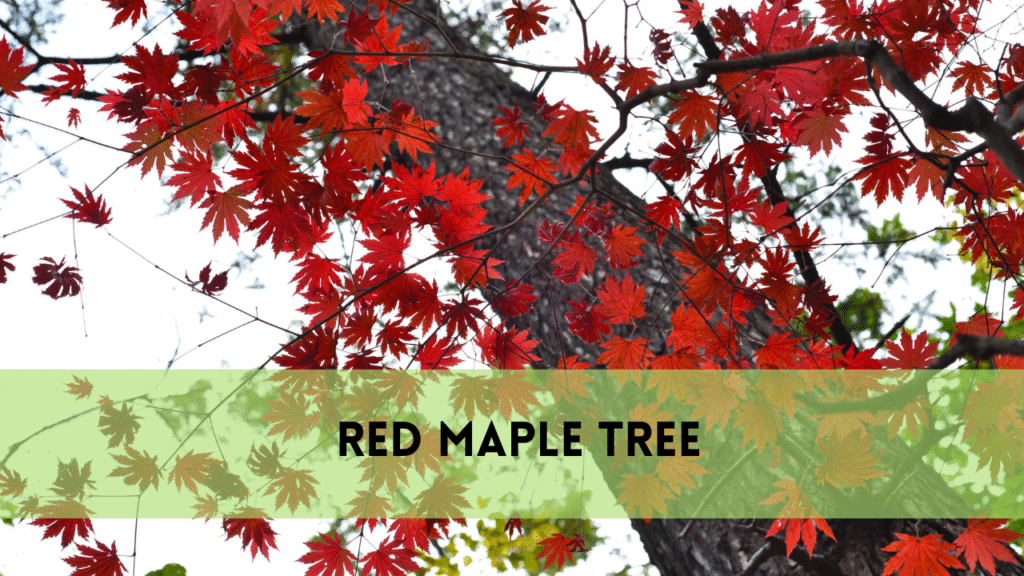Oak Bracket Fungus
A secret world of natural splendor awaits those who travel beyond the well-trodden routes in the depths of old oak woodlands. The mesmerizing beauty of the oak bracket fungus may be found here, tucked in the core of these ancient giants. This amazing creature, while sometimes neglected, plays an important function in the forest ecology and has a rich folklore and practical application history. We will go deep into the captivating domain of the oak bracket fungus in this extensive 3000-word piece, studying its biology, ecological relevance, cultural significance, and the many ways it continues to inspire amazement and wonder in nature lovers and scientists alike.
The Oak Bracket Fungus: Nature’s Masterpiece Revealed
The oak bracket fungus, also known technically as Fomes fomentarius, is a hardy and interesting member of the fungal world. Over millions of years, it has evolved to flourish in the particular habitat offered by old oak trees. This interesting fungus was originally mentioned by the ancient Greeks, who saw its potential as both a practical tool and a symbol of strength and tenacity.
The Biology of the Oak Bracket Fungus
The oak bracket fungus is a polypore fungus that creates woody, shelf-like structures that may last for many years. These brownish-gray formations, which are often seen connected to the trunks of oak trees, are semicircular or fan-shaped. They may grow to be 30 centimeters in diameter, making them a noticeable landmark in the wooded environment.
The oak bracket fungus has a sophisticated internal structure, despite its modest appearance. It is made up of layers of tightly packed tubes, each of which contains countless microscopic spores. These tubes are in charge of the fungus’ reproduction and spread. When the spores reach maturity, they are freed from the tubes and transported away by the wind, finally resting on appropriate surfaces for future fungal development.
Oak Trees and Oak Bracket Fungus Are Silent Partners
The interaction between oak trees and the oak bracket fungus is an intriguing example of natural mutualism. Oak trees, despite their towering power and endurance, are susceptible to fungal infestations. While technically a parasite, the oak bracket fungus often attacks trees that have already been compromised by other causes such as damage or age. By colonizing these weaker trees, the fungus accelerates wood degradation, breaking them down into important components. As the nutrients are released back into the soil, they feed other plants and species in the surrounding environment.
The capacity of the fungus to break down solid oak wood is a tribute to its particular enzymes, which are capable of breaking down lignin, a complex organic molecule that resists degradation. This extraordinary adaptation enables the oak bracket fungus to access energy contained inside oak wood that would otherwise be unavailable to other species.
From fire starters to medicinal brews, cultural significance abounds.
The oak bracket fungus has played an important part in the lives of people throughout history. Its strong, woody fruiting bodies have been employed for a wide range of practical applications, making it a valuable resource in many civilizations.
The oak bracket fungus was highly regarded as a fire starter in ancient times. Even when moist, the fibrous tissue found inside the fungus is very combustible. Early people would light it by smashing it against rocks or using it to collect flint sparks. Its capacity to light fires made it a necessary tool for survival.
Furthermore, the therapeutic characteristics of the oak bracket fungus have been used. The ancient Greeks and Egyptians thought it had therapeutic powers and used it to cure wounds and inflammations. The fungus includes a variety of bioactive chemicals, including triterpenoids, which have been researched for their anti-inflammatory and antibacterial properties.
A Folklore Story About Oak Bracket Fungus and Lightning Strikes
The oak bracket fungus has long been associated with lightning strikes in mythology. It was thought that these fungus sprouted exactly where a bolt of lightning hit an oak tree. The fungus’s relationship with lightning contributed to its mystery, earning it the moniker “tinder fungus.” The fungus was thought to have magical qualities, and people used to carry it as a talisman to protect themselves against lightning strikes.
The relationship with lightning also led to the assumption that the oak bracket fungus could start fires without any outside help. As a result, it is widely used as a fire starter in many civilizations.
Modern Science and the Oak Bracket Fungus
While the mythology and practical uses of the oak bracket fungus are fascinating, so is its function in contemporary science. Researchers have focused on this amazing fungus, discovering its potential for a variety of uses.
The field of mycoremediation is one such topic of interest. The capacity of the oak bracket fungus to degrade complex organic substances, including toxins, has raised the prospect of employing it to clean up polluted surroundings. Scientists are investigating its ability to repair hazardous substance-contaminated places, transforming a once-ignored forest resident into an environmental hero.
A Biodiversity Treasure Chest
Like many fungi, the oak bracket fungus is an important element of forest ecosystems. It is an important actor in the degradation of wood, which aids in the recycling of nutrients and the establishment of new plants. Furthermore, this breakdown process is essential for soil formation, giving a rich foundation for the establishment of several other plant species.
While feeding on dead or dying oak trees, the oak bracket fungus not only recycles nutrients but also develops holes and cracks inside the tree trunks. These hollows provide excellent habitat for a wide range of species, from insects to birds. In fact, the presence of these hollows increases biodiversity by attracting species that use them for breeding or foraging.
Natural Architecture’s Wonder
The artistic flare of the oak bracket fungus is one of its most intriguing characteristics. As the fungus develops, it leaves beautiful patterns and textures on the oak tree’s surface. The concentric circles and radial lines on its fruiting bodies provide an enthralling exhibition of nature’s labor.
The fungus’s development and the layers of tubes that create and release spores result in these formations. Every year, when the fungus adds a new layer, it further adorns the tree with its own distinct pattern. These patterns not only make the oak bracket fungus visually appealing, but they also supply researchers with useful information about its age and pace of development.
Oak Bracket Fungus and Oak Trees: A Living Legacy
The connection between the oak bracket fungus and oak trees is more complicated than it seems at first look. While the fungus may endanger already-weakened trees, it also acts as a rejuvenator. It opens the path for new life by breaking down the wood of aging or sick oak trees. In the process, it contributes to the forest’s natural equilibrium.
This ecological function demonstrates nature’s complexity and interconnection. The oak bracket fungus and the oak tree perform a delicate dance in which life and death are not antagonistic forces but rather two sides of the same coin. This cycle of decay and rebirth is critical for the forest’s survival.
Efforts at Conservation and Preservation
As we learn more about the oak bracket fungus and its function in ecosystems, there is a rising awareness of the need to protect this creature and the old oak trees it calls home. Conservation efforts are critical to preserving these key parts of our forests for future generations.
Protection of old-growth oak forests, which offer crucial habitat for the oak bracket fungus, is one conservation strategy. As logging and industrialization pose rising challenges to these forests, it is critical to protect the delicate balance that exists inside them. We not only save the oak bracket fungus, but we also protect the biodiversity of these unique environments.
The Never-Ending Search for Knowledge
The oak bracket fungus is still not fully understood. While we have uncovered many of its mysteries, there is still more to learn about this conundrum. Scientists and researchers are still investigating its possibilities, from its therapeutic characteristics to its use in mycormediation.
The oak bracket fungus is proof of the need of protecting our natural environment and learning the complexities of the ecosystems that sustain life on Earth. It serves as a reminder that even the tiniest and most inconspicuous species may have a significant influence on our world.
Related Posts:
FAQs
What is the oak bracket fungus, and where can I find it?
The oak bracket fungus, also known as Fomes fomentarius, is a woody polypore fungus that is often seen on the trunks of oak trees in old forests. It grows well in temperate climates and is also seen on other hardwood trees.
What are the practical applications of the oak bracket fungus?
The oak bracket fungus has a long history of useful applications. Because of its incendiary qualities, it has been used as a fire starter, a source of medicinal chemicals, and even a material for making tinder.
What role does the oak bracket fungus play in forest ecosystems?
The oak bracket fungus is a decomposer that breaks down the wood of damaged oak trees. It recycles nutrients into the soil, which benefits other plants and creatures. It also hollows out tree trunks, giving habitat for a variety of species.
What role does the oak bracket fungus have in folklore and cultural traditions?
The oak bracket fungus is related with folklore and represents strength and tenacity. It is thought to guard against lightning strikes in various cultures, and individuals have carried it as a talisman.
How can we help to save the oak bracket fungus and its habitat?
Conservation activities involve the preservation of old-growth oak forests as well as creating awareness about the value of these ecosystems. We secure the survival of this rare creature and its role in forest biodiversity by conserving its environment.
Conclusion
The oak bracket fungus, with its rich history, deep biology, and cultural value, is a monument to the natural world’s beauty and complexity. Let us not overlook the humble artist who lives among the great oak trees while we go through the woods and admire their magnificence. The oak bracket fungus tells an intriguing narrative about the many interactions that exist in the world around us, from its usage as a fire starter to its involvement in forest ecosystems. It is a living tribute to nature’s power, where even the tiniest creatures may leave an indelible imprint. As we marvel at the tenacity of the oak bracket fungus, let us also consider the significance of protecting the conditions that support such marvels. Conservation efforts are about more than simply conserving a single species; they are about preserving the rich web of life that makes our environment awe-inspiring.




